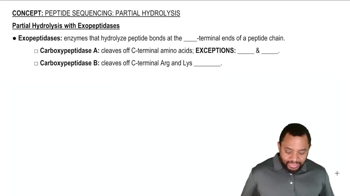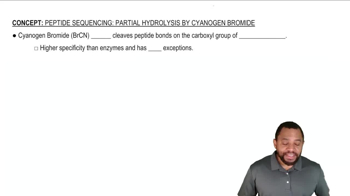Show how you would use bromination followed by amination to synthesize the following amino acids.
(b) leucine
 Verified step by step guidance
Verified step by step guidance Verified video answer for a similar problem:
Verified video answer for a similar problem:



 9:34m
9:34mMaster Peptides and Polypeptides with a bite sized video explanation from Johnny
Start learning